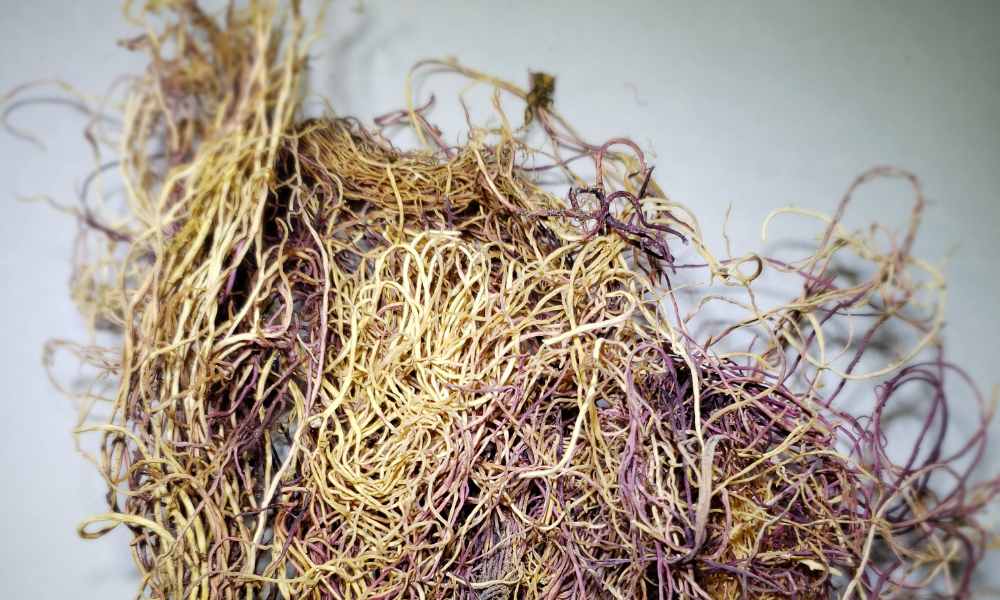How To Tell if Your Sea Moss Is Real or Fake

Sea moss, contrary to its name, is an algae that thrives on rocky coasts where the ocean is in constant motion. Authentic, self-sustaining sea moss is seasonal. Sea moss is most common along the Caribbean shore. Aside from being an essential component of coastal ecosystems, sea moss also offers abundant health benefits, making it a must-have medicinal plant for your collection of natural remedies.
Sea moss is an alkaline-based plant rich in bountiful nutrients, from vitamin B12 to calcium, that can improve your health in many ways. Some of the most notable benefits include improved metabolism, a strengthened immune system, and energy boosts. Plus, sea moss has no restrictions; you can indulge in it as much as you want.
If you don’t live by the coast, getting your hands on sea moss can be challenging. When you can’t reach the source, you risk buying lab-grown imposters. Learn how to tell if your sea moss is real or fake, whether dried or in powder form, and reap all the benefits this versatile and beneficial algae offers.
Evaluate the Appearance
The appearance of your sea moss can give a lot of useful insight into the validity of your harvested bunch. Although labs have access to a lot of advanced technology, they still fail at creating identical conditions of natural environments. Fake sea moss isn’t exposed to the same growing conditions as naturally grown sea moss. Unfortunately, lab-grown varieties have diminished effectiveness and benefits. Some features to focus on when distinguishing fake from real sea moss include coloration, size, shape consistency, and residue.
Deep Purple and Golden Hues
When hydrated, sea moss is a rich red and deep purple color. Dehydrated sea moss, on the other hand, can assume a deep purple, golden, or yellowy-green color. Coloration can vary depending on the type of sea moss. Also, older sea moss is a lot darker than youthful bunches. Still, the color vibrancy and pigmentation of your sea moss can indicate the authenticity of your batch. Lab-grown sea moss looks a lot paler than naturally grown varieties due to limited sun exposure. You want sea moss with vibrant coloration.
Stringy Thin Strands
Sea moss, in its organic form, is small in size with multiple branches. When dried, sea moss becomes thin and stringy—its signature look. Fake sea moss tends to have thicker strands.
Shape Variations
Organic materials lack consistency. You will rarely find two of the same in the wild. Therefore, naturally grown sea moss consists of branches and strands slightly varying in size and shape. Fake algae appear more uniform in shape.
Minimal Salt Residue
Salt residue is a big authenticity giveaway. Most lab-grown sea moss is artificially salted. Natural sea moss retains very little salt residue. If you see lots of salt clumps on your sea moss, you might have a fake on hand.
Give It a Taste and Smell
Anything grown in the wild carries the odors and tastes of its environment. After all, plants are very absorbent. Because of this, natural sea moss exudes a poignant smell that’s salty, fishy, and sea-like. When you smell authentic sea moss with your eyes closed, you can transport yourself back to the seaside along the rocky coasts and among the salty, sticky water and air. Fake sea moss doesn’t have the same perfume.
Similarly, authentic sea moss tastes drastically different than lab-grown variations. The latter carries an overpowering salty taste due to the artificial salting. Although real sea moss also has a salty taste, it is nowhere near as strong as that of fake varieties. Authentic sea moss tastes slightly salty and extremely fishy.
Rehydrate Dried Sea Moss
Hydrated sea moss is thicker than its dried form due to the algae’s high water retention. Therefore, real sea moss will expand and thicken considerably when rehydrated. Authentic sea moss also appears more gel-like and translucent when rehydrated.
Analyze Texture and Consistency
In its gel form, sea moss is jelly-like and has a texture similar to aloe—thick and slick. When dehydrated, sea moss is really dry. The biggest giveaway between real versus fake sea moss in texture and consistency is that the latter will still feel moist and soft when dehydrated. Fake sea moss can also have a really grainy surface texture from all the added salt and a thicker consistency.
Research Growing and Harvesting Conditions
Understanding certain terminology and credentials can help you better assess a sea moss’s authenticity. Sea moss grows in three ways: naturally or wild-crafted, ocean-farmed, or in a pool and lab. Both ocean-farmed and lab-grown varieties grow in more controlled environments with heavy human influence. Although still grown in the ocean, ocean-farmed sea moss can be inorganic depending on the seeds and any fertilization the farmers use. Natural sea moss grows in uncontrolled environments and wildly flourishes on its own.
Discerning where your sea moss originates from gives you insight into its authenticity and effectiveness. At AlkaHerbs, we sell Honduras sea moss sourced and harvested from naturally grown sources along the Honduras coast.
Buy From a Reputable Source
A reputable source guarantees authenticity and quality. Here are some factors to look for in a reputable source:
- Product transparency
- Positive reputations from clients
- Experience and expertise in herbs
- Diverse shop inventory—they sell other natural herbs
AlkaHerbs is a reputable source of natural remedies and herbs. All our products are natural and from the sources that other reputable herbalists get their herb collections from. Our sea moss is natural and wild-crafted. We sell sea moss in its gel form, as capsules, and dried.
Knowing how to tell if your sea moss is real or fake affects the benefits you get out of your batch of algae. Natural sea moss is rich in healthy nutrients and an effective herb for improving your immune system, relieving cough and sore throat symptoms, and boosting energy. Fake sea moss provides fewer benefits and is less effective. Reap the many therapeutic uses of sea moss by stocking up on the real deal and shopping with AlkaHerbs.


